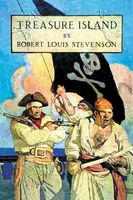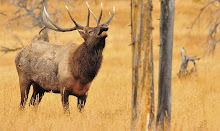 Gmaps Pedometer is a "little hack that uses Google's superb mapping application to help record distances traveled during a running or walking workout."
Gmaps Pedometer is a "little hack that uses Google's superb mapping application to help record distances traveled during a running or walking workout."This program works like a charm. The instructions are to the left of the map. Place your cursor and your starting point and double click. Double click at your first turn, and follow that process until you have finished your route. Distances are figured as you go. (It is 0.56597787156678 miles from the front of the Orendorff Building to the post office.)
 In case you are not familiar with maps.google.com, you can place your cursor on the map and drag it until you get the spot you want centered. You can zoom in or out, and you can switch from map view to satellite view to hybrid view.
In case you are not familiar with maps.google.com, you can place your cursor on the map and drag it until you get the spot you want centered. You can zoom in or out, and you can switch from map view to satellite view to hybrid view.Click here for a map of Powell. The general address for the site is www.sueandpaul.com/gmapPedometer/
The map covers the US, but the Satellite view is not as good everywhere as it is for Powell (Sorry, Cody.)

 For the second straight year, the Northwest College Trail has been named a finalist in the Associated Collegiate Press national Pacemaker Award.
For the second straight year, the Northwest College Trail has been named a finalist in the Associated Collegiate Press national Pacemaker Award.


 Such images may seem common today, but they were a miracle in the 1930s when Edgerton invented the stroboscope which was used to create ultra-high-speed and still (or stop-motion) photography.
Such images may seem common today, but they were a miracle in the 1930s when Edgerton invented the stroboscope which was used to create ultra-high-speed and still (or stop-motion) photography.

 . . . researchers who study the evolution of language and the psychology of swearing say that they have no idea what mystic model of linguistic gentility the critics might have in mind. Cursing, they say, is a human universal. Every language, dialect or patois ever studied, living or dead, spoken by millions or by a small tribe, turns out to have its share of forbidden speech, somevariant on comedian
. . . researchers who study the evolution of language and the psychology of swearing say that they have no idea what mystic model of linguistic gentility the critics might have in mind. Cursing, they say, is a human universal. Every language, dialect or patois ever studied, living or dead, spoken by millions or by a small tribe, turns out to have its share of forbidden speech, somevariant on comedian  Thursday, the 22nd, Jerred Metz will be giving a reading from his book The Last Eleven Days of Earl Durand at 7:00 p. m. in FAB 70. The reading is the first in a series sponsored by the Northwest Writer's Series.
Thursday, the 22nd, Jerred Metz will be giving a reading from his book The Last Eleven Days of Earl Durand at 7:00 p. m. in FAB 70. The reading is the first in a series sponsored by the Northwest Writer's Series.



 The Rosebud Film Group Opens the 2005-06 Season on September 9 with a showing of
The Rosebud Film Group Opens the 2005-06 Season on September 9 with a showing of 









 ms.dsk is reading
ms.dsk is reading  Rob Koelling is reading
Rob Koelling is reading  S. Renee Dechert is reading
S. Renee Dechert is reading  Mary Ellen Ibarra-Robinson is reading
Mary Ellen Ibarra-Robinson is reading  Bill Hoagland is reading
Bill Hoagland is reading  Jennifer Sheridan is reading
Jennifer Sheridan is reading  Robyn Glasscock is reading poetry by
Robyn Glasscock is reading poetry by  Susan Watkins is reading
Susan Watkins is reading